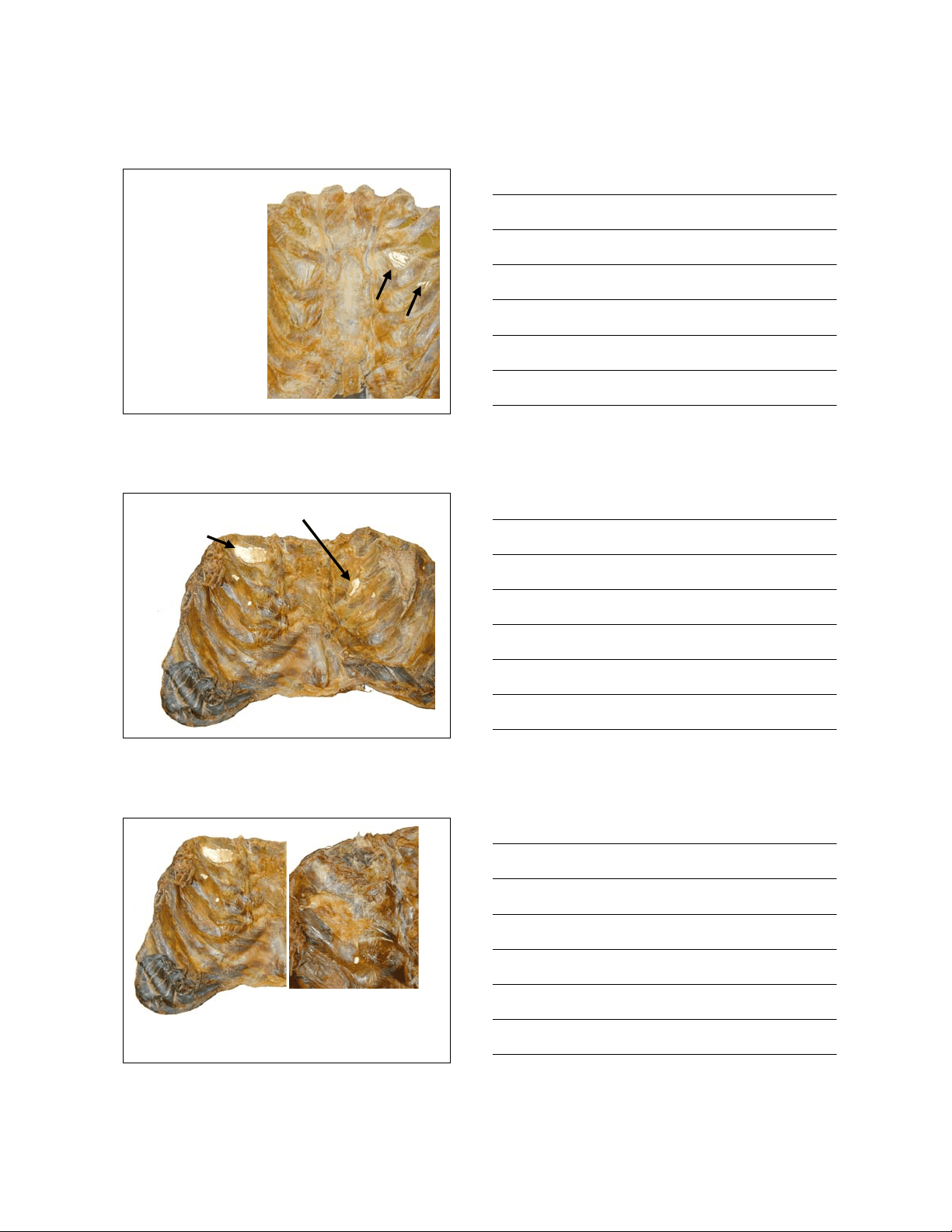





Study with the several resources on Docsity

Earn points by helping other students or get them with a premium plan


Prepare for your exams
Study with the several resources on Docsity

Earn points to download
Earn points by helping other students or get them with a premium plan
Community
Ask the community for help and clear up your study doubts
Discover the best universities in your country according to Docsity users
Free resources
Download our free guides on studying techniques, anxiety management strategies, and thesis advice from Docsity tutors
Material Type: Notes; Professor: Naples; Class: Biology of Forensic Analysis; Subject: BIOLOGICAL SCIENCES; University: Northern Illinois University; Term: Unknown 1989;
Typology: Study notes
1 / 7

This page cannot be seen from the preview
Don't miss anything!




•Interior of chest wall, showing ribs, muscles and blood vessels. •White areas of calcification are similar to “bumps” reported on ribs of historic populations reported to have a variety of diseases •Note that the calcifications occur between the ribs, not on their inner surfaces •Could indicate periosteal reaction and overgrowth of ribs????
Large “plaques” on inner surface of ribs and adjacent tissues These features are consistent with a diagnosis of tuberculosis in the living patient
But, do these features affect the bones?
“Plaques” are calcified, but are able to be removed from the inner surface of the ribs and did not affect the surface of the bone! Therefore, many of the “features” identified as disease signs on bone are probably artifacts from preparation
Oddities of ribs, such as color changes, bumps, roughness and other surface irregularities more likely are the result of postmortem factors, especially the methods used to process skeletal elements for inclusion in museum collections!
The postmortem processing of bones has nothing to do with the previous lives of the
In forensic cases injury can not only cause death, but analysis of the patterns can permit the investigator to determine what occurred, how, when, and by what means. Trauma analysis can allow determination of cause and manner of death. All body organs and systems are subject to trauma, and each responds characteristically to injuries
Why do intravenous drug users have many physical problems and symptoms of this activity? Drugs are often “cut” with talc that accumulates within the skin to leave characteristic irritations.
Scarring can also occur from constant subdermal irritation, such as hemorrhaging, as shown here, i. e. “tracks”
Talc also accumulates in internal organs, such as the liver, where it can block vessels and damage tissues
Liver tissue with talc infiltrations under polarizing light
•New forensic methods will be needed and developed in the future
•Many new career paths will be available for those who have an interest in adapting the areas of science and medicine they study to solving crimes and preventing violence
Contemporary studies can so the same using computer imaging
Traditionally done on skulls, using tissue depth markers
Wild gorilla with osseous growth on face.
Diagnosis?